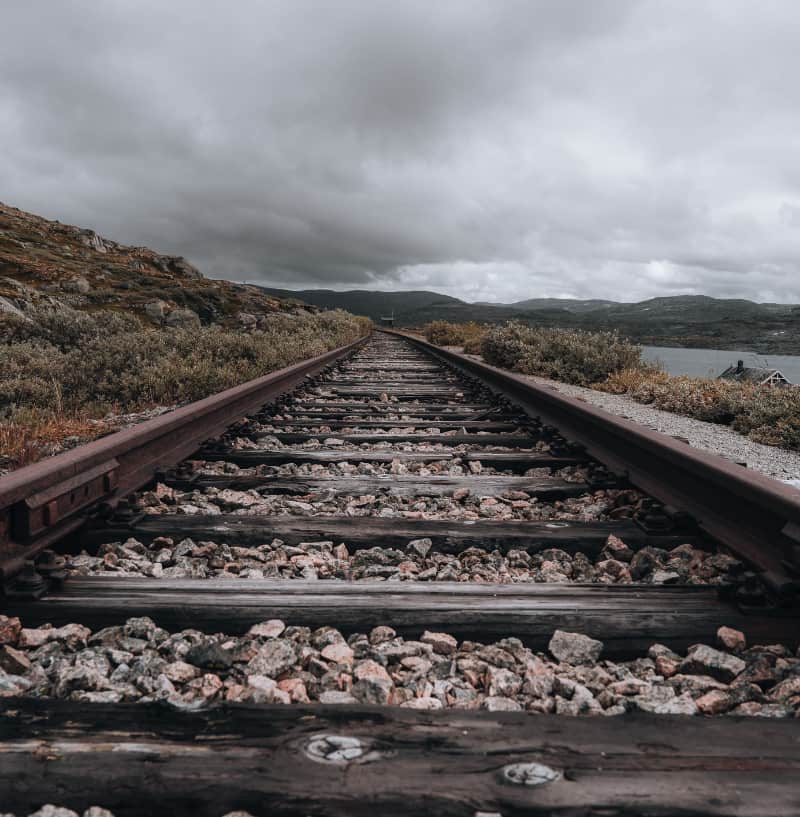Ballast and Sub Ballast in Southern California
Railroad ballast is a layer of crushed stone or gravel that is placed on the surface of a railroad track bed. It is used to hold the tracks in place, provide drainage, and distribute the weight of the trains evenly over the track bed. The ballast is typically made of crushed rock, such as granite, limestone, or trap rock, which has been screened to remove any large or elongated pieces that might interfere with the stability or smoothness of the tracks.
The ballast is typically about 4 to 8 inches deep, and it is placed on top of a layer of subgrade material, which is the native soil that has been compacted and graded to support the tracks. The subgrade provides a foundation for the tracks, and the ballast helps to distribute the weight of the trains evenly over the subgrade, preventing the tracks from sinking or shifting.
The ballast also serves as a drainage layer, allowing water to drain away from the tracks and preventing the buildup of excess moisture, which can cause the tracks to become slippery and unsafe for trains. In addition, the ballast helps to absorb the shock of the trains as they pass over the tracks, providing a smooth ride for passengers and helping to extend the life of the tracks.
Sub-ballast in Southern California
Sub-ballast, on the other hand, is a layer of material that is placed under the ballast. It is typically made of a more durable material, such as recycled concrete or crushed rock, and it is used to provide additional stability and support for the tracks. The sub-ballast is usually about 6 to 12 inches deep and is placed on top of the subgrade, which is the native soil that has been compacted and graded to support the tracks.
The main difference between ballast and sub-ballast is their location and function. Ballast is located on the surface of the tracks and serves as the primary layer that holds the tracks in place and distributes the weight of the trains. Sub-ballast is located below the ballast and serves as a secondary layer of support for the tracks, providing additional stability and durability. Both ballast and sub-ballast are essential components of a railroad track bed, and they work together to ensure the safety and reliability of the rail system.
Why Granite for Railroad Ballast?
Granite is a hard, durable, and dense rock that is well-suited for use as railroad ballast. It has a number of characteristics that make it an ideal material for this application.
First, granite is very strong and resistant to wear and tear, which is important for a material that will be subjected to the constant pounding of trains traveling over it. It is also able to withstand the extreme temperatures and weather conditions that it may be exposed to, making it a durable and long-lasting material.
In addition, granite is relatively smooth, which helps to provide a smooth ride for trains and passengers. It is also resistant to water and does not break down easily, which makes it an effective drainage layer for tracks.
Granite rock in Southern California is also widely available and relatively inexpensive, which makes it a practical choice for use as railroad ballast. It is also easy to work with and can be easily crushed and screened to the desired size and shape for use as ballast.
Overall, the combination of strength, durability, and practicality make granite an excellent choice for use as railroad ballast.
Where to buy railroad ballast:
There are a few potential benefits to buying ballast directly from a rock quarry in Southern California:
- Quality: Buying directly from the source can ensure that you are getting high-quality ballast that meets industry standards. Quarries typically produce ballast that is screened and crushed to specific size and shape requirements, which can help to ensure that it is suitable for use as railroad ballast.
- Price: Buying directly from a quarry may also be more cost-effective than purchasing ballast from a third-party supplier. Quarries often sell ballast at wholesale prices, which can be lower than the prices charged by retailers or contractors.
- Convenience: Buying directly from a quarry can also be more convenient, as you can often arrange for the ballast to be delivered directly to your job site by rail or truck. This can save time and reduce the need for additional transportation costs.
Overall, the main function of railroad ballast is to provide a stable foundation for the tracks and to distribute the weight of the trains evenly over the track bed, ensuring the safety and reliability of the rail system.

